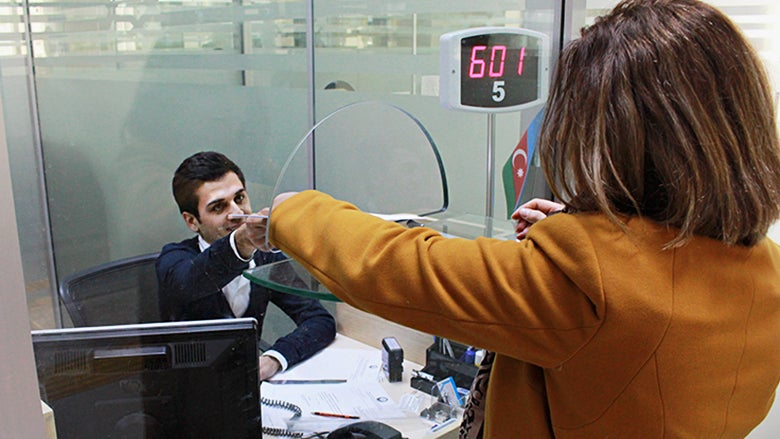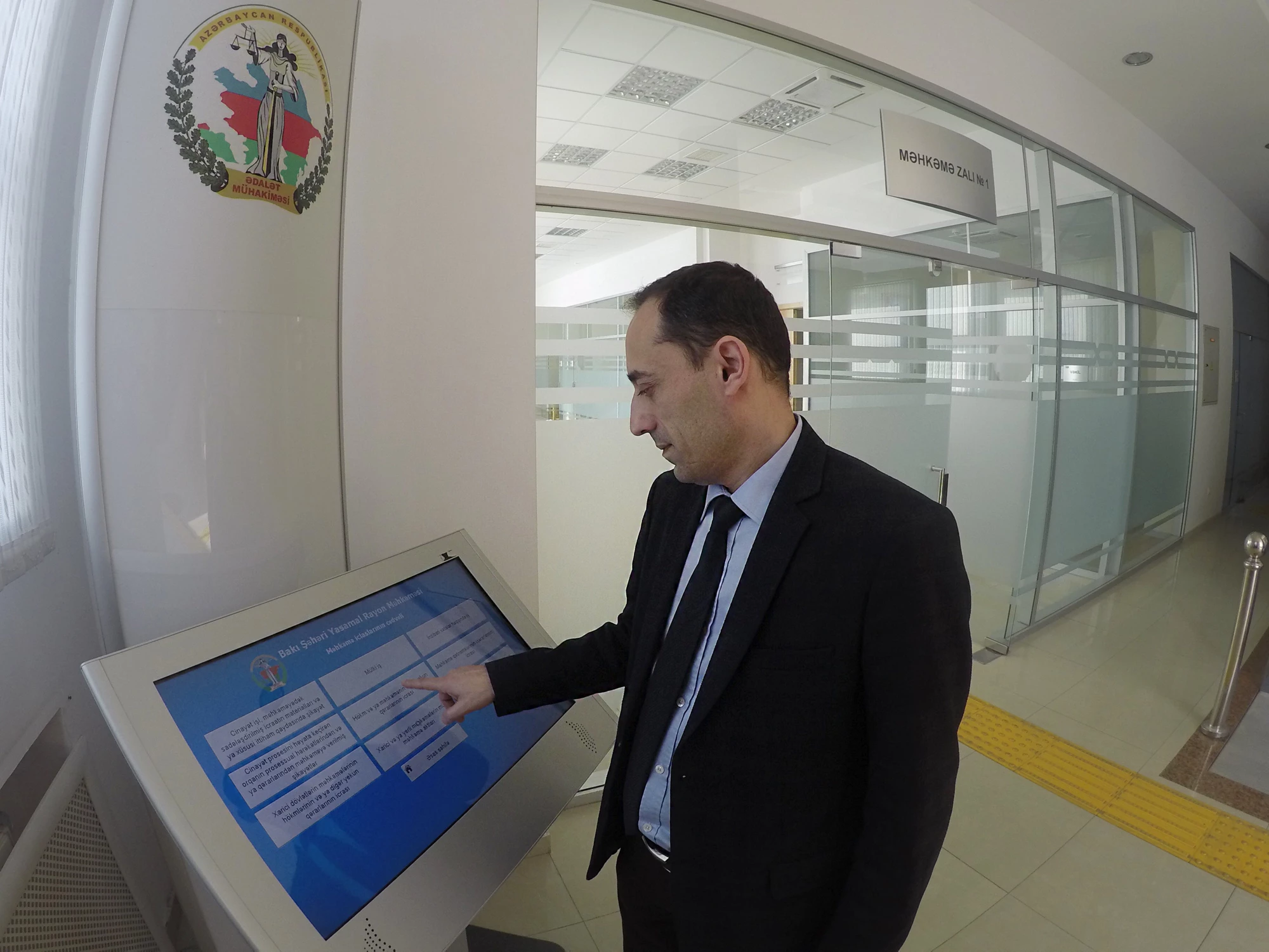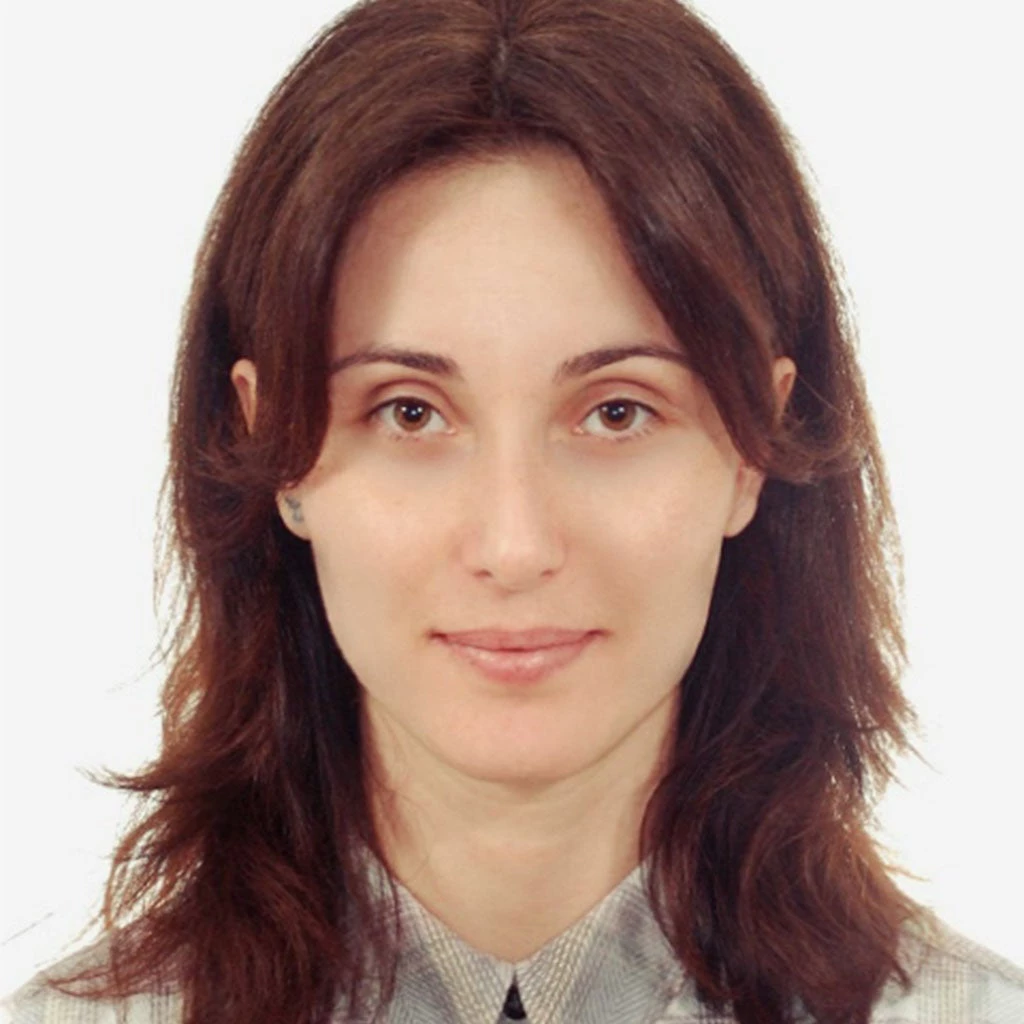
Photo credit: Tamar Kobakhidze/World Bank
Indeed, so much had changed here since my last visit. Most visibly, the urban skyline is now speckled with construction cranes, reflecting a city busy growing upward – its physical outline seeming to transform before my eyes.
But infrastructure is just one aspect of Baku’s modern story. Beyond the hectic expansion of concrete and metal, I was also able to observe exciting changes in technology and innovation that are helping to transform an integral part of this city’s life – its judicial services!
I was lucky to be invited to visit Yasamal District Court of Baku City, which is one of the pioneer “smart courts” that were designed and built as part of the Judicial Services and Smart Infrastructure Project – a World Bank-supported project designed to improve access, transparency, and efficiency in the delivery of selected justice services in Azerbaijan.
One of the judges of the Court, Ramin Gurbanov, guided me through the history of Azerbaijan’s justice system, starting with 1993 – when the decision was made to write the Constitution; 1995 – when it was actually written using the Montesquieu principles; the year 2000 – when all major codes were adopted and legislation put in place; and finally onto the present day – as the country strives toward creating transparent, trustworthy, and accessible judicial services.
I mentioned “smart courts” before – which is an innovative concept – so to help us understand it better, let’s hear from the expert.
Another important element of the Judicial Services and Smart Infrastructure Project is the installment of e-Justice tools to support and strengthen citizens’ access to judicial services. The main beneficiaries are economically and socially vulnerable groups, including internally displaced people, refugees, women, juveniles, and unserved populations in remote areas. And, the private sector also benefits, thanks to new e-notary and business e-registry services.
Azerbaijani citizens who are used to filling-in printed forms, or who feel more comfortable submitting their documents in person with the assistance of court professionals, can still do so if they wish. But individuals who use the new Unified Judicial Portal will definitely save themselves time – and that of lawyers too – by avoiding traffic and queues.

“Broad reforms have been carried out in a short time, without simply copying the novelties from others”, says Judge Gurbanov, as we continue our stroll through the court. It is very important, he believes, to learn about lessons from other parts of the world and to listen to experienced international experts.
But, he also stresses that, in order to provide timely and quality services, you must adapt those lessons to your own particular context. In 2016, Judge Gurbanov was elected Vice President of the Council of Europe’s Commission on Efficiency of Justice, a recognition of his contribution to judicial reforms and modernization.
Building up capacity is no less important than building up the courts. And Azerbaijan takes this quite seriously, with a view to improving transparency, encouraging better use of technology, and reducing red-tape.

Photo credit: Tamar Kobakhidze/World Bank
Other exciting initiatives are also in progress. For example, it is envisioned that business-intelligence technology will be combined with managerial know-how to further improve court efficiency.
Azerbaijan is also partnering with the Slovenian Supreme Court, under the aegis of the World Bank-financed project, to launch an application to automate the filing and processing of small-value high-volume civil enforcement cases.
Between 2010 and 2015, incoming civil cases in Azerbaijan’s first-instance courts shot up from 55,000 to almost 314,000 (that’s almost 6 times!). During this period, filings of uncontested civil enforcement cases rose eightfold, from about 21,000 to more than 165,000 cases. This has clogged court dockets and created a crisis for first-instance courts. The application is being piloted in Yasamal and is expected to roll out this year.
The recently launched Supreme Court e-Library is getting expanded, providing online legal and judicial information resources to justice sector personnel, other professionals, the media, and the general public.
Meanwhile, the construction of courts and court complexes in the towns of Sumgayit, Masalli, also in the Narimanov and Surakhani districts of Baku, is advancing successfully.
But do you want to see how Azerbaijan’s “smart” future is actually being built? Then I invite you to check out this 24/7 web streaming site, which plays a role in increasing transparency and accountability in the overall process.
And with that, let the winds of change continue to blow!


Join the Conversation